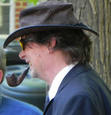Reading textbooks is different than any other type of reading. Unlike reading for pleasure (whether you read fiction or nonfiction), textbook reading is done because you have to do it. Also, textbook reading is much more detailed than pleasure reading. Unlike reading magazines or newspapers, textbook reading covers more material; articles are typically short and to the point, unlike most textbooks. And unlike reading how-to material (manuals, reports, instructions, etc.), textbook reading rarely leads to immediate action. Textbook reading is seldom done outside of a class experience, which explains how textbooks are read.
Three scenarios
There are three different times you read a textbook. First, you can read a textbook to prepare for a class, so that when you are in class you have a better chance of understanding the material covered in the class. Second, you read a textbook after class to solve problems. Finally, you read a textbook later to prepare for a test or examination. Each scenario suggests a different approach to reading a textbook.
When preparing for a class, the primary focus of your reading is on key points. You want to have a basic understanding of what the class will cover, so your focus is on fundamental ideas, not the details. The point of the class is to clarify the details; if you have a grasp of the basics, you can learn the details much more effectively. When preparing for a class, make a note (yes, write it out) of any questions or confusions you have with the material to make sure that particular point is covered in class.
After the class, when you are working on assigned problems or lab exercises, the textbook becomes a reference manual. The focus at this time is on any example problems worked in the book. What steps were taken, in what order, and for what purpose become the primary concern during this phase. Read the case studies provided to understand how the principles discussed are applied in real world situations. Reading details is much more important at this time than understanding broad concepts.
Finally, reading the textbook to prepare for a test or to create a paper goes back to the fundamentals, only now the examples and case studies become supports for the ideas read. Start by reading any review sections or summary sections to refresh your awareness of the principles. Then read the problems and case studies to understand the applications. Any confusions you have at this stage should be immediately researched rather than delayed; unlike the preparation reading, you have already had the class so the confusions that still exist are yours to resolve.
Note Taking
When preparing for a class, mind maps are a good note-taking tool. Mind maps concentrate on main ideas, showing how the details support these fundamental concepts. Reading after class is focused on solving particular problems, usually the problems assigned for homework. To prepare for a test, report, or presentation, take notes using an outline form. These review readings are concentrating on structure and interrelationship of ideas, which can be clearly expressed in outlines. Hopefully by the time you are reviewing for the test you have read the textbook at least once if not twice, so there will be few to no examples of new material to disrupt your process of outline creation.
Reading textbooks is not entertaining, it is purposeful. As long as you take the right approach, textbooks can provide information much more efficiently than any other type of reading. Used well, textbooks can be a helpful source of information for years and years. And that is a good reason to read them well.
John Steely is a certified life coach concentrating on personal and professional development. His site Steely Services provides information on personal development topics. John shares his love of classics in his Monthly Classic program of free books.


